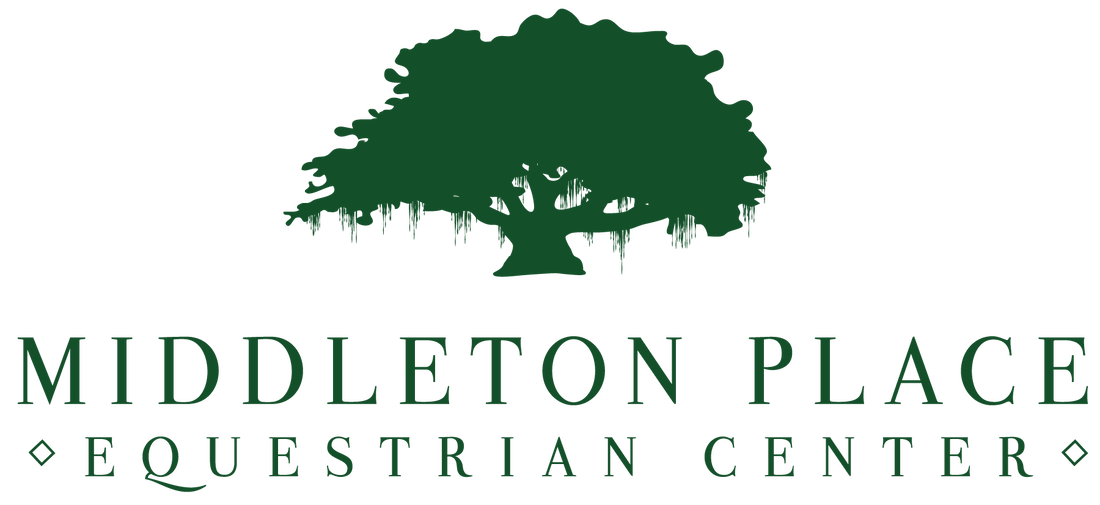|
In part two of this blog series, we are going to finish talking about preparing your horses, barns, and stables for winter!
Hello trail friends, and welcome back to the blog! We hope that you've been working on going through the checklist we shared with you in part one of this blog and putting it to good use for your horses, stables, and barns! We also hope that it helped prepare you with any last-minute items you might have forgotten or might have not even thought about. For all of our first-time horse owners, we know that every changing season brings another lesson to learn, more excitement, and even more surprises. Owning a horse for the first time is very similar to having a child. It is a beautiful and magnificent creature that needs your help, dedication, and care. The longer you have your horse you find out more and more things that all the manuals and books never mentioned. They're worth it though, aren't they? While so many people might hate the cold weather, especially for those not used to it here in Charleston or the South East, it might surprise you that it can still be a very wonderful and beautiful season with your horse. There is nothing quite like seeing a horse crunch its way through a frosty field in the morning while their breath puffs up around their head. There is also nothing like watching a horse play in the snow, but that might be an even rarer event here in Charleston. You might have to make a trip up north to see that! To make this winter season as special as it can be, make sure to take this blog to heart. Make sure to follow all of the tips, suggestions, and ideas we are providing in both of these checklists to allow both you and your horse to enjoy this chilly season. If you put the work in, this will be an easy winter to navigate and work through. After this crazy year, that is something we all need, right? For all of our horse owners, don't forget that we have some of the best horse boardings right here in Charleston. We are here to help care for your horse when you need it most. If your stables are barns are ill equipt for the season, if you need to go out of town on an emergency, or just need an extra pair of hands Middleton Equestrian Center boarding is here for you. Please don't hesitate to reach out and talk with us if you have any questions or comments about our horse boarding! Also, we are still open for our historical trail rides! Dress in layers and come see the Lowcountry in a way you never have before! We are still following all COVID precautions, and what better way to adventure out and stay socially distant than on the back of a beautiful horse? If you are still looking for a wonderful holiday or end of the year gift, shop small and give big with Middleton this year! Gift cards are available to give to all of your loved ones. Introduce them to the best horseback riding in Charleston, and share some of the best horseback riding trails in Charleston with your loved ones. Make sure to visit our website to learn more, and we are always here for all of your questions! Let's get back to the blog series, shall we? We still have a little wiggle room for these last-minute additions for winter preparations since it has been a mild winter here in the Lowcountry so far, but as we all know that can change in an instant. Let's get back to work! COMFY AND COZY! As we mentioned in the first part of this blog, your horse will be burning a lot more calories during the winter months to keep them warm. While they are burning these calories to stay warm and eating more to help with this, they will still need a little extra protection from the cold. Allow their natural coats to grow out as much as possible, but keep up with their grooming habits and schedules. If you plan or working or training your horses hard during these cooler months, keep them trimmed. This will make sure that they will not get overheated during their training and work sessions. In either of these situations, make sure to have warm, waterproof, and lightweight blankets to provide extra warmth throughout the winter. Make sure to check your horse's skin often when they wear their blankets for extended periods. Blankets, while extremely helpful, can cause irritation and sores from rubbing or long term wear if not properly taken care of. Before blanket wearing weather arrives, make sure to inspect and clean each of your blankets, since it has been almost a year since they were last used or touched. Replace and repair them if needed before it gets too cold. Also, make sure you have enough blankets for all of your horses. Your younger horses might have had a growth spurt since the last time they wore their blankets, and your older horses might have lost some weight due to their age. If more blankets need to be purchased for these reasons, make sure to do so! Blankets need to fit your horses properly. Ill fitted blankets can cause irritation, be unsafe, or not provide the warmth your horses need while wearing them. The cold weather will attack one of your horse's most fragile parts of their bodies, and that is their feet! Make sure if they are going to be shod all winter that you pick the proper shoe fittings with your Ferrier. You can choose shoes that will help them navigate the snow and ice much easier and help them prevent slipping. Regardless if you are going to be choosing to keep your horses shod or not, their hooves need to be cleaned of cold wet mud and ice every day to avoid infection and irritation. Make sure that they are also dry at the end of their day when they are put back into their stables. If you are choosing to go without shoes for the winter months, make sure to do so before it gets too cold, and give them time to acclimate to this change. HEALTHY CHANGES! Make sure your horse has a proper and thorough visit with the vet before the cold weather hits and stays around for a while. It might have been a minute since their winter or spring checkup, and this is a good opportunity to catch any early issues or help prevent anything that could potentially happen to them during the cold months. This can be a great time to ask for other supplements and additives for your horses from your vet to help make the winter months healthier and happier for them. Make sure you give your horse a good balance of indoor and outdoor time throughout the winter. However, it is important to make sure that they are kept away from deep snowdrifts and extra icy paths to prevent slipping and damage done to their legs. Make sure the ventilation in your barns and stables is enough to keep fresh air flowing throughout, enough to limit dust and debris build-up, but not enough to cause drafts in the barn. Your horse's skin can become extra sensitive through the harsh cold months so if it is possible, exercise them in a dry and clean area through the winter! Also, consider your health, safety, and comfort this time of year. If you get sick and you're unable to care for your horses, what will they do without you? Make sure you have the proper winter clothing to keep you warm and safe while being comfortable enough to do your job and daily tasks of caring for your horse. Also, think about your day to day tasks and duties, and ways to make them easier. One way to help is to insulate your hand tools. You can cover them with blankets when they're not being used, store them in styrofoam, or you can even slip styrofoam pipes over the handles of all of your hand tools to create a little extra insulation. Grabbing or using very cold hand tools can be cold enough to burn, even when wearing gloves. Make sure to properly clean all of your hand tools before these winter months and before the new year. When you get into the depths of winter, you won't want to stop and make time for doing simple tasks like that, you will want to get your work done and get back inside. This is also an excellent time to service all of your power equipment on your property. Check all of the engines, oil levels, lubricants, and tires on your tractors, mowers, trucks, snowblowers, and all of your powered equipment. When stocking up on equipment and supplies for the winter, don't forget back up items to help with broken hand tools, power tools, and all of your vehicles. Again, you want all of these items to be working properly so when the bad weather comes, you won't get stuck with a broken-down tractor, truck, or snowblower on the bad weather days. Time to get to work friends! We have been busily working on all of these things ourselves; preparing our horses, barns, stables, tools, equipment, and ourselves for what's to come. Our staff has been working as hard as ever to not only prepare for this but to keep up with keeping our stables and riding equipment sanitized to help keep us all safe during the cold weather. We are thankful that the temperatures during the first few weeks of December have felt more like fall, but who knows when that will change. We also want to thank each of you for what this year has been. You have helped us continue to share our passion and love for our horses and our horse trails. You have helped us continue to show off the beautiful land of the Lowcountry, and you helped keep all of our staff and fellow guests safe and happy. We couldn't be more thankful for all of that! We aren't sure what 2021 will bring, but we hope it's truly a year to celebrate. Stay safe and healthy friends, we can't wait to see you on our trails in the new year! From all of us at Middleton Equestrian Center, we wish you a very Horsey Holiday and a very Horsey New Year!
1 Comment
Curious about what you might find when riding on our trials or on trails of your own? Here are some important accessories you need to know about!
Happy June, everyone! Let's continue to get back in the saddle one day at a time. When joining us for your next trail ride, there might be a few needed accessories that you might not know what they are or what they do. Don't worry! We are here to help guide you. Also, everything you need for your next visit with us will be provided. We are taking very serious steps to keep our guests and employees very safe. Everything you touch and come in contact with will be very safe and clean. But as you prepare to come to visit us, we wanted to share some information about some important trail riding accessories. This information is also great for those who want to explore trails out in the wild or who might want to invest in their trail riding equipment. Don't forget, our historic trail rides are open and available to the public. You don't want to miss this beautiful and unique experience this summer! Each of the items we will be talking about today makes riding and any experience on or with a horse much more prepared, easier, and comfortable for both parties involved. They help keep the quality of the ride enjoyable and can come in handy to keep you safe and protected in any situation.
Have you seen or used some of these accessories before? Or are they all new to you? We are excited to help continue and nurture any education when it comes to our beautiful horses and everything it takes to ride them safely and properly. The trails are calling you, so what are you waiting for? Until you join us for your next ride, please continue to stay safe! We are Charleston's premier horseback riding trail, dedicated to keeping you safe while exploring the beauty of the Lowcountry. 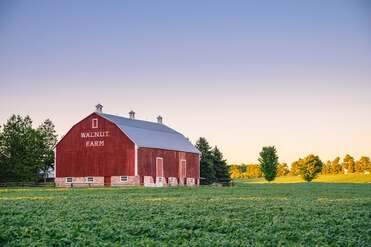 Due to the current state of things, you may or may or may not have been able to get a start on your barn's spring cleaning. Since the Lowcountry is starting to open up again, it is the perfect time to get started! Hello Lowcountry friends and fellow horse lovers! We are so excited because it looks like we will see you back in our barns and back on our trials sooner than many of us thought possible. With that becoming a reality more and more every day, we have started on our barns and stables deep cleaning and have continued to follow safety guidelines to keep our employees safe. We also want to make sure that when you come and visit us again, you'll stay healthy and safe too! Since we are digging into the deep cleaning of our barns and stables and are continuing to sanitize everything, we wanted to share some tips and suggestions on how to give your barn the best deep clean possible! If you are are a farmer or a horse owner, deep cleaning and disinfecting has always been apart of your cleaning schedule. Horses are so susceptible to bacteria and germs that are found on all surfaces in a barn and anything they can come in contact with, that it is always important to keep up with a consistent cleaning schedule. When this pandemic set in, the need to clean and sanitize was nothing new to us! Regularly disinfecting your barns and stables have always been important to help with the care and health of your horses. It has always helped with keeping your horses and employees healthy. But, with the world in the state that it is, it's more important than ever. As many of you know, this is hard work. It takes time, and a lot of extra elbow grease to do it well. But it is always worth it. When you get started, it's important to move your horses away from the area that you will be cleaning, and relocate them until you're finished. Also, it is important to remove their bedding from their stalls to maximize the deep clean. When cleaning with soap, detergent, and disinfectants of any kind, make sure that you choose based on how it could affect your farm, your animals, and yourself. Always wear the proper clothing and safety gear to keep yourself safe when using chemicals of any kind.
Like we mentioned above, keeping a barn and its horse stalls clean and disinfected takes time and serious work. But, the horse's health and the health of your employees is worth that time. Also know that when you are getting ready to head back out on our trails and to visit our horses again, a deep clean like this has always been normal for us. It is nothing new. It is something that we take very seriously. We have been and will continue to apply these ideas to helmets, saddles, and any other riding gear that is used by our guests and visitors. Remember, once we do get back to normal we offer the best horseback riding in Charleston, the best horse trail riding in Charleston, and more. During this break, take the time to visit all of the pages of our website, and enjoy learning more about Middleton trail rides! We will see you soon! 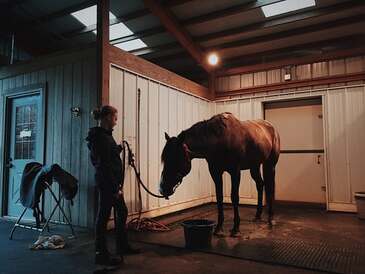 Owning a horse of your very own can be a very special experience and a lifetime goal. Before you decide to take this very large step, make sure you know everything that goes into the process of researching, buying, and owning a horse. For many, a dream come true is owning your very own horse. Believe us, we understand that. But, it's not just beautiful fall days filled with glorious rides through your favorite fields and feeding them a few lumps of sugar. There is so much that goes into the purchasing, owning, and caring of a horse. As much as we support the decision, we stress that it's not for everyone. Please take the time to consider this blog as you are deciding to or thinking about buying your very first horse. Think about it this way. Treat buying a horse like you would any big investment. You must take the time to research, understand the strategies of buying a horse and talk with those who have had serious experiences of their own when buying horses. You don't want to make the mistake of buying a horse that's wrong for you, get frustrated, and then give up on the horse and the dream of owning one. As much as you love them, buying a horse isn't the correct path for everyone. It's a huge emotional, time-consuming, and expensive commitment. The Book Work
We love horses, we love owning horses, and we love caring for horses. But we know the work that goes into this every day. We want you to share this magic with us, but be prepared to face the realities too. If it's not quite time for you to own a horse, you know the best place to horseback in South Carolina! Right here at Middleton Equestrian Center! We can't wait to see you on your next ride! 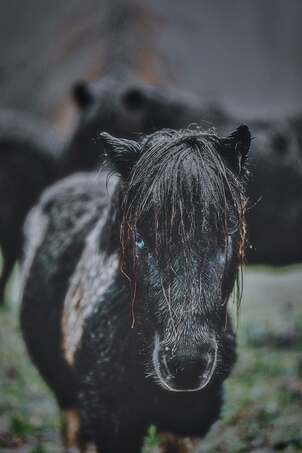 With hurricane season officially kicked off in the Lowcountry, it's time to prepare not only your homes but also your barns and think of the best plan of action for your animals when a storm is heading your way! It's not new news that Hurricane Season is officially here in the Lowcountry! Now that we have made it through our first hurricane, it's still incredibly important to stay prepared and on alert until the end of the hurricane season. It lasts through November and even though that's just a few more weeks, that's still plenty of time for anything to start brewing. As a horse owner, it's just as important to prepare your stables and grounds and have an evacuation plan for your horses as you would be for you and your family. We wanted to share a few helpful hints on how to prepare for a hurricane, how to evacuate, or how to hunker down when you're a horse owner or own a farm of your very own. The first important step is to make sure that you stay informed, make educated decisions, and be prepared to decide anything at a moment's notice. Thanks to incredible Apps and advancements in storm tracking, it's much easier now to understand a storm than ever before. But no matter how intelligent our weather systems might be, the power of mother nature will always win. The first step is to prepare your barns and grounds. You need to invest in these steps if you are evacuating or hunkering down. Don't wait until the last minute to start preparing. We recommend planning before hurricane season even begins. This way you're prepared no matter what happens!
If a storm decides to head your way, it is your personal choice to stay or evacuate. Once you have prepared for the storm, and you decide to evacuate, there are still some important steps to take care of before you get on the road.
If you decide to stay, it's best to take your preparation stages to the next level. Remember to put the safety of yourself, your employees, and your animals first. Make sure the decision to stay has been made with good intentions behind it. Sometimes if you can leave, it's better to take that opportunity than not.
No matter what you decide to do during a hurricane, always make safety your number one priority. We hope that these tips help you stay prepared for this hurricane season and many more to come. We will see you next time! One of the most important pieces you'll ever buy when owning a horse is its saddle. But with so many different types of riding, what saddle is right for you?
When it comes to buying a saddle, it should never be something that you scrimp on. It is an item worth investing in since you'll possibly be spending a lot of time in it and it is a huge part of your safety while riding. But it can be daunting when it comes to buying a saddle knowing and deciding which one is the right one for you. The normal range you'll find on a basic saddle is between $100 and $500, but once it comes to custom saddles and custom needs, it could easily dip into the thousands. But when it comes to comfort and your safety, sometimes adding those extra zeros is worth it. Originally, a horse was ridden without a saddle, which was called bareback riding. Did you know the Chinese were the ones to invent the saddle? When you are in the market of buying a saddle, it needs to be fit to your shape, size, and style of riding you plan on doing. Have a saddle master inspect the horse you'll be using the saddle for too. The saddle master will need to know what disciplines the horse will be doing from general riding, to hunting, competition, and so on. There are so many options out there, but we hope this helps you narrow down your options!
There are Western saddles, which are used by actual cowboys. There are sidesaddles which were designed to keep women ladylike while riding in the middle ages. Other saddles include dressing saddles, jumping saddles, hunting saddles, and racing saddles. There are also certain saddles made specifically for long hours in the saddle and are a little more expensive than your basic saddles. Some of these include the Abetta Saddle, the Allegheny Mountain Trail Saddle, and the Tex Tan Saddle. We promise that it is worth the time to research your saddle and taking the time to find the perfect fit. You should invest just as much time researching a saddle as you would a car, a house, and anything that would keep you safe and comfortable. The next time you visit us for a day of trail riding, ask your trail leader about the styles and types of saddles found in our barns. They will be impressed with your knowledge of what you learned here today! When you come to visit us at Middleton to enjoy our beautiful land, take a ride on one of our majestic horses, and to enjoy the beauty of the Lowcountry have you ever wondered what makes up a perfect horse stable?
We pride ourselves on having the best horses in the Lowcountry and the best trails to enjoy the Lowcountry in a unique and beautiful way. But we are also very proud of the stables that our incredible employees that keep our stables immaculate and our horses happy and healthy. But have you ever thought what exactly you need to keep a stable functioning and up to everyday work? Some of these items might not surprise you, but some of them just might! A lot of what you need to have a functioning horse stable is very practical and might already be found around the house. A lot of it is inexpensive and will make life a lot easier. The current collection of items in your stable will keep you organized, help keep a cleaner barn, and keep you and your horses safe. Our employees make it look so easy! When you are getting ready to build or create your own horse stable avoid getting stressed and think about categorizing what you need into four different categories.
The list of items below is what we recommend you always have around, especially if you are a first-time stable owner! 1. Contact List Make sure you have all of your important contacts where you can find them. This includes your Veterinarian, back up Veterinarian, Equine Dentist, Farrier (someone who trims and shoes horses' hooves), transport in case of an accident, and all the numbers of your employees. Also, having a list of handy places that deliver food to your area doesn't hurt either. Caring for horses and their well being means long hours, and you will need to eat too! 2. Mini Fridge This might sound weird, but it's not used for what you think. A lot of medication and supplements that your horses might and will be taking throughout their lifetime need to be stored in a refrigerator. Keeping it on hand and close to your horses is best. 3. Coffee Grinder Again, this isn't used for what you think. Your horses might have issues swallowing large pills or supplements. You can grind them in the coffee grinder and add the powder to your horse's food or water. You can also turn the powder into a paste and use a syringe to put it into your horse's mouth. 4. Basic Medical Supplies Even if you aren't a vet or have a vet on staff, it is always important to have basic medical supplies and equipment on hand. Accidents happen and sickness can occur. A vet might not be readily available or close if your barn is in a very rural place. As you are stocking your barn in preparation check in with your veterinarian for the best suggestions for your store of supplies. 5. Hand Sanitizer This can be more beneficial than soap and water. It can be readily available and carried on your person no matter what a day at the barn could bring. From the birth of foals to trail rides, your hands will be clean. 6. Baby Wipes Everyone who owns or keeps a horse strives to keep them clean, groomed, and show ready. But try as anyone might, horses get dirty. Keep these on hand to wipe out basic dirt and gunk from your horse's eyes, muzzles, nostrils, ears and for touch-ups all over their bodies. 7. Wide Barn Aisles This architectural choice isn't just for you and the horses to use but also for tractors and vehicles to get in and out of the barn. Also, have large entrance doors into the horse's stalls ready to handle whatever mood the horse might be in when transporting them on or off these vehicles. 8, Non-Slip Floors This is a safety precaution for you, all barn employees, and those visiting the barn. Never have standing water around your horses either! 9. A Well-Stocked and Well prepared Tack Room A Tack Room is something that every stable should have. This room will store all of the "stuff" you will use to care for the horses that aren't already needed in their stalls. But some barns use it for storage of their trophies and other awards. 10. Bedding This doesn't mean blankets and pillows for your horse, even though they will wear blankets during cold weather to keep them warm, they will need bedding on the floor of their stalls all year round. The most common material to use is hay and shavings but you can also use wood pellets, paper, moss, hemp, and stall mats! The next time you come to visit us for a ride at Middleton, take a moment to really see what makes up the stable around you and all the hard workers keeping it clean and fun for you! |
AuthorMiddleton Place Team Archives
January 2021
Categories
All
|
|
4280 Ashley River Road, Charleston, SC 29414
[email protected] 843-735-0709 Please also visit: Middleton Place | The Inn at Middleton Place |
Site powered by MadeSimply
|
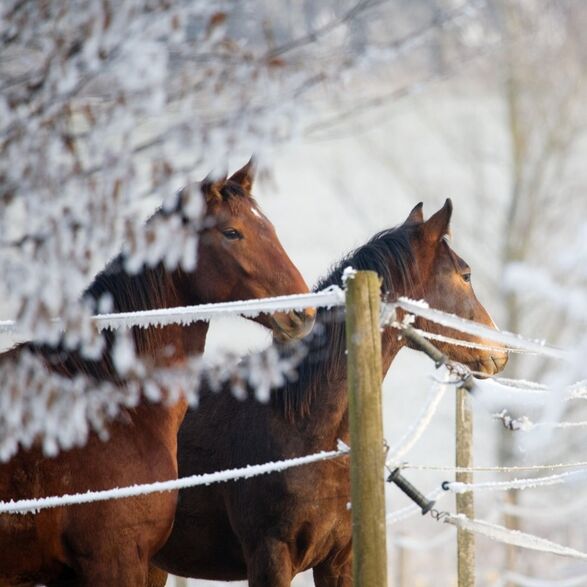
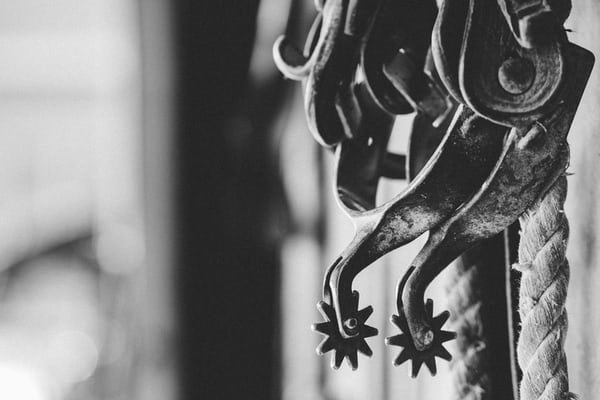
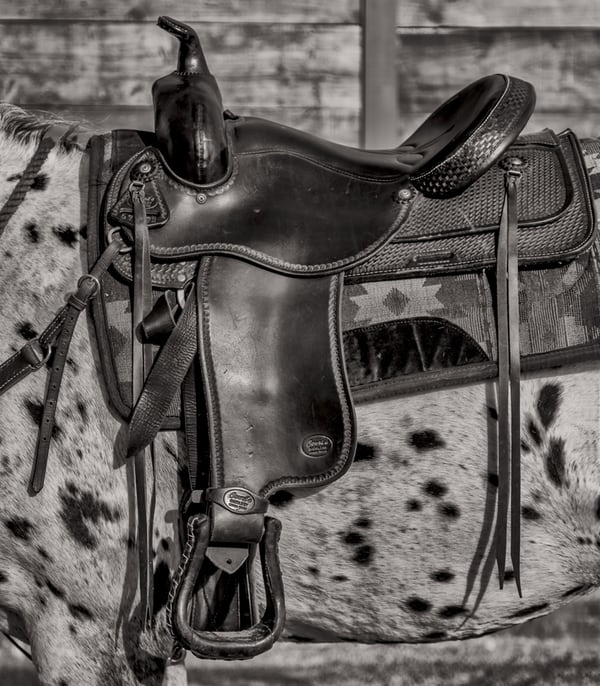
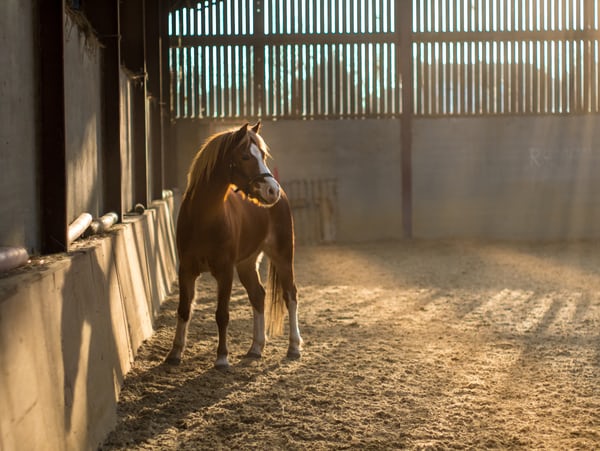
 RSS Feed
RSS Feed

